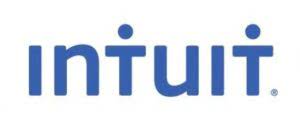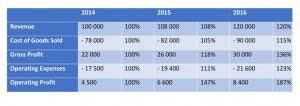What Is Net Revenue?- Formula & Calculation
This requires a dynamic inventory system capable of tracking and managing returned products efficiently. Under the periodic inventory system, there is only one journal entry to record the sales return and allowances. The cost of goods sold and a reduction in merchandise inventory is not recorded.
- Based on the settings, let’s see how the item iscosted on RMA order for different cost methods.
- Understanding how to calculate net revenue is crucial for assessing profitability, financial health, and business performance.
- The accounting entries for sales returns are a critical component of financial reporting.
- An item returned that was bought with credit reduces accounts receivable.
- Recording sales returns and allowance is straightforward after knowing their accounting treatment.
- However, it still affects a company’s revenues in its financial statements.
Journal Entry for a Sales Return
Workers aged 18 to 20 see their minimum wage increase by £1.40 (16.3%) to £10 an hour, or £2,500 a year for a full-time worker. Alongside a rise in many consumer bills that we’ve been reported on throughout the week, a raft of measures announced by the government in its October budget will take effect too. Frozen tax thresholds mean more pensioners will be pulled into paying income tax if they have almost any additional income, such as a private pension.
Auditing Sales Returns Transactions
- For sales returns classified as referenced in OrderManagement, they’re costed as listed in this table.
- This sales return allowance account is the contra account to the sales revenue account.
- Usually, companies provide a breakup of the contra revenue account to calculate the net sales figure in the income statement.
- In other words, it is the goods received from a customer due to various reasons.
- Determine if the payment was made in cash, via GCash, Maya, bank transfer, or credit card.
- In this case, the customers do not need to return goods back to the company.
- Revenue recognition is a key accounting principle that determines when revenue is recorded.
Like other contra accounts, the contra revenue account goes against revenues in the income statement. Sales returns, allowances and discounts are some of the examples of this type of contra account. Some companies may keep these accounts together due to their similar nature. However, others will separate them into two accounts for better presentation and processing.
Best Practices for Sales Returns and Allowances
Moreover, providing multiple return options, such as in-store, via hedge accounting definition mail, or through third-party drop-off points, caters to customer convenience and preference, further enhancing their experience. The importance of managing sales returns extends beyond mere bookkeeping. It influences policy formulation, shapes strategic decision-making, and plays a crucial role in nurturing customer relationships. As such, it is essential for those in finance to have a comprehensive understanding of how to handle these occurrences effectively. The two accounts may sometimes be combined into a single account in the general ledger.
Sales Return: Definition and How To Record
The original sales journal entry is the same as the periodic inventory system. A sales return is an inward return because in this case the return is received back by the seller. In simple words, the one who sells the product receives the product back. For the seller, a sales return is called an inward return, and for the buyer, it is called an outward return because the product goes from the buyer and comes to the seller.
The accounting for sales returns and allowances is very straightforward. The sales return and allowances account under the periodic inventory system is recorded the same way as under the perpetual inventory system. However, the only difference is the additional entry to reduce the cost of goods sold with the correspondence increase of merchandise inventory under the perpetual inventory system. Some companies may not have sales returns and allowances account for some reasons, e.g. they do not have many transactions, so it is not worth keeping track.
The credit to the Accounts Receivable account reduces the amount of accounts receivable outstanding. Keep a record of each sales transaction, including debit cash and credit sales. If you are collecting sales taxes, you should credit the relevant balance sheet account for sales tax liability. Sales returns are different from sales allowances, which involve reducing the price of the product but not actually taking it back. Both sales returns and allowances can affect a company’s reported revenue. Therefore, when sales returns and allowances occur, companies have already recorded sales in the accounts.
Example sales return entries
He has been a manager and an auditor with Deloitte, a big 4 accountancy firm, and holds a degree from Loughborough University. On 5th Feb 2020, the customer returned 5 pieces of product Y and 6 pieces of product Z to ABC cosmetics. So once this entry is posted, inventory will be increased, and the cost of goods sold will be derecognized. Now we have to deal with inventory/goods that customers just returned.
customer feedback survey examples
This item can be added to the inventory account record, and the cost of goods sold can be reduced by the same amount. Therefore, sales returns are goods that contra asset account customers return to a company. In other words, it is the goods received from a customer due to various reasons.
When a business sells products or goods, there is the possibility of a return by its customers due to faulty or obsolescence within the agreed timeframe. The accounting for sales return and allowances is straightforward and the difference between a perpetual inventory system and a periodic inventory system. Managing it is as important as managing sales because it plays a vital role in ascertaining actual sales, profit, stock, etc.
Decrease Revenue:
Sales return and allowances are the contra account of the sales revenue account. This is usually the case where customers return goods due to they are damaged or defective. In this circumstance, the sales returns and allowances and related accounts are recorded the same as above journal entry.
Companies must also present the sales returns and allowances figures in the financial statements. Usually, these are a part of the net sales calculation in the notes to the financial statements. Companies do not record this transaction as late fees and interest charges it does not affect the sales or sales return. The company will record the amount as a reduction in inventory. Once a return is verified as compliant with the company’s policy, it can be recorded in the sales returns account for accounting purposes.











